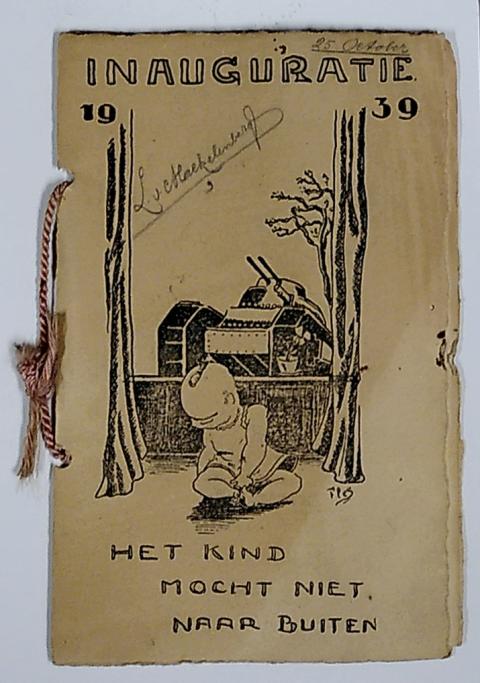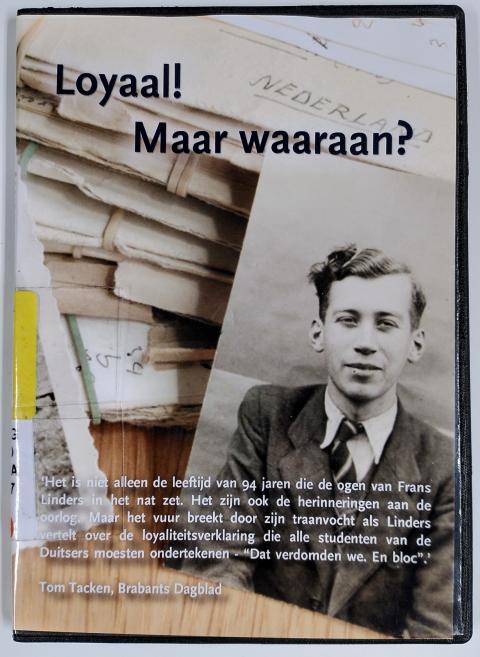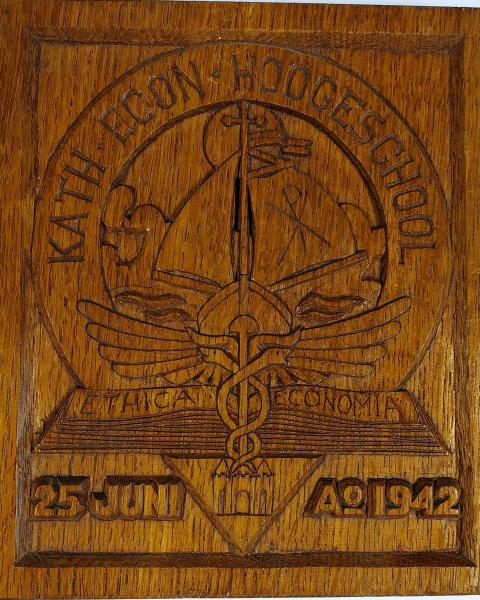World War II
Universities in the Netherlands remained open after the invasion by Germany in May 1945. In the third year of the occupation, universities were asked by the Germans to have all students sign a declaration of loyalty. In that declaration, they had to promise to "refrain from any act directed against the German Reich [...].” The declaration was introduced by the German occupiers on March 13, 1943; students had until April 10 to sign it. Those who did not sign were no longer allowed to attend lectures.
The Council of Nine, a consultative body of the Dutch student resistance during World War II that included Tilburg's TSC St. Olof was already aware of the introduction of the declaration on March 6 and prohibited students in its illegal magazine De Geus from signing the loyalty declaration. Within the very close-knit student body, the pressure on the (former) members was very high. The senior members insisted to the younger members that one should definitely not sign under penalty of prosecution by the internal justice of the Corps.

Associations in troubled times (pictured above)
After some hesitation, the Hogeschool administration refused to present the requested declaration to the students. As a result, hardly any statements (about 2%) were signed, followed by a total closure of the Katholieke Economische Hogeschool as of April 12, 1943.

Documentary on wartime students (pictured above)
Lecturers and students, however, kept in touch, trying to provide moral support and concrete help to each other. Martinus Cobbenhagen, one of the university's most important leaders, meant a lot to the Tilburg resistance. He prepared lecture notes and food parcels for students in hiding, wrote encouraging letters and advocated for his students to German authorities. During World War II, 22 Tilburg students died during bombings, resistance activities, in concentration camps and from the effects of forced labor, accident, or illness. A monument has been erected in their memory.

The Hogeschool’s logo, created by a student in World War II (pictured above)
More about history and academic heritage
The Tilburg University academic heritage is a very diverse set of archives, visual materials, collections, devices, recorded stories, et cetera that relate to the history of the university.